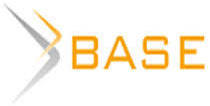Kitovras on the border of cultural worlds: literary and mythopoetic interpretations of the image
In the modern socio-cultural environment, the relevance of interdisciplinary research in the field of history, philology and literary criticism is increasing due to the need for joint scientific efforts to create a holistic understanding of the interactions of different types of cultures, constantly in the conditions of trade and political communications. One of the problematic aspects of this study is the mechanism of intertextuality, which works differently in the socio-political (Russian, written) and natural (mythopoetic, traditional culture of the aboriginal population of the Russian Arctic) spheres of existence. The work of this mechanism was studied by the methods of comparative historical-cultural and literary-interpretative analysis using the example of one of the most symbolically loaded artifacts ̶ a mirror-shaped bronze medal (hereinafter referred to as MBM) of the 17th century, accidentally discovered on the island of Faddey Severny in the Laptev Sea in the fall of 1940 by topographers of the East Taimyr Hydrographic Expedition. The subject of the study was the phenomenon of intertextuality implemented by aboriginal masters in Siberia and the Russian Arctic as metamorphoses of the image of Kitovras based on Russian invariants of the MBM. The purpose of the study was to trace the iconographic metamorphoses that destroyed the image of Kitovras as a biblical king-sage and teacher, turning him into a spirit-helper of shamans, in order to find out how and why the formats of the aesthetic canons of the Russian cultural world were adapted / rethought by the aboriginal population of these regions of Eurasia. The novelty of the study is determined by the fact that for the first time, using the example of the analysis of the literary, mythopoetic and iconographic multi-aspect nature of the image of Kitovras imprinted on the reverse side of the MBM, an attempt was made to study different forms of understanding the social (Russian tradition) and natural (shamanic tradition of the indigenous population of the Russian Arctic) existence by people of different cultural worlds of the late Middle Ages. Metamorphoses of the image of Kitovras in the culture of the indigenous population of Siberia and the Russian Arctic, on the one hand, highlighted forms of latent protest against the invasion of an incomprehensible and alien Christian cultural world, the rejection by the indigenous population of its spiritual and symbolic values. On the other hand, the study noted the adaptation of the achievements of the material side of Russian culture, brought into their lives through the bridges of trade contacts, namely: the values of the “yellow” metal (copper, bronze), the formal features of this type of artifacts (the round shape was associated with solar symbolism in the indigenous mythopoetic views).

















While nobody left any comments to this publication.
You can be first.
Aleksandriya: Roman ob Aleksandre Makedonskom po russkoy rukopisi XV veka (1965), [Alexandria: A Novel about Alexander the Great based on a 15th-century Russian manuscript], published according to Collection A, Nauka, Moscow; Leningrad, USSR (in Russ.).
Alekseev, A. A. (1987), “Translations from Hebrew Originals in Ancient Rus”, Russian Linguistics, 11, 11-20 (in Russ.).
Arktika – moy dom: Narody Severa Zemli: Polyarnaya entsikl. shkolnika (1999), [The Arctic is my home: Peoples of the North of the Earth: Polar encyclopedia for schoolchildren], Severnyye prostory, Moscow, Russia (in Russ.).
Aspelin, J. R. (1877), Antiquites du Nord Finno-Ougrien.T. 2 [Antiquities of Northern Finno-Ugric. Vol. 2], G.V. Edlund, Helsinki, Finland (in French; in Finn.).
Avanesov, S. S. (2023), “The Rib of a Centaur: the Image of a Kitovras in the Visual Structure of Urban Space”, Journal of Visual Theology, 5 (2), 208-264 (in Russ.), DOI: 10.34680/vistheo-2023-5-2-208-264, EDN: AZWJPT
Belova, O. V. (2001), Slavyanskiy bestiariy [Slavic Bestiary], Indrik, Moscow, Russia (in Russ.).
Bobrov, A. G. (2017), “Kitovras of Euphrosynus of Belozersk”, Trudy Otdela drevnerusskoy literatury. T. 65 [Proceedings of the Department of Ancient Russian Literature, Vol. 65], in Semyachko, S. A. (ed.), Pushkinskiy Dom, St. Petersburg, Russia, 423-449 (in Russ.).
Bobrova, A. I. (1997), “Letter from the Middle Ages”, Zemlya Verkhneketskaya: Sbornik nauchno-populyarnykh ocherkov k 60-letiyu obrazovaniya Verkhneketskogo rayona [Verkhneketskaya Land: Collection of scientific and popular essays for the 60th anniversary of the establishment of the Verkhneketskaya region], Tomsk University Publishing House, Tomsk, 118-130 (in Russ.).
“Explanatory Paleya” (1901), Polnoye sobraniye russkikh letopisey, izdannoye po vysochayshemu poveleniyu Arkheograficheskoyu kommissiyeyu. T. 18 [Complete collection of Russian chronicles, published by the highest order of the Archaeographic Commission. Vol. 18], Type. M.A. Alexandrov, St. Petersburg, Russia, (in Russ.).
Fyodorova, E. G. (2017), Loshad v istorii, kulture i mirovozzrenii obskikh ugrov [The horse in the history, culture and worldview of the Ob Ugrians], Tomsk University Publishing House, Khanty-Mansiysk, Tomsk, Russia (in Russ.).
Gafni, I. (2003), The Jews of Babylonia in the Talmudic Era, Mosty kultury; Gesharim, Moscow; Jerusalem, Russia (in Russ.).
Gladkaya, M. S. (2015), “Centaurs in the Carvings of the Dmitrov Cathedral in Vladimir. Understanding the Image”, Arkheologiya Vladimiro-Suzdalskoy zemli: materialy nauchnogo seminara. Vyp. 5 [Archaeology of the Vladimir-Suzdal land: materials of the scientific seminar. Iss. 5], Publishing House of the Institute of Archaeology of the Russian Academy of Sciences, Moscow, Russia, 245-255 (in Russ.).
Golosovker, Ya. E. (1993), Skazaniya o Titanakh [Tales of the Titans], Vysshaya shkola, Moscow, Russia (in Russ.).
Golovnev, A. V. (1995), Govoryashchiye kultury: traditsii samodiytsev i ugrov [Talking Cultures: Traditions of the Samoyeds and Ugrians], Publishing House of the Ural Branch of the Russian Academy of Sciences, Ekaterinburg, Russia (in Russ.).
Kamchatnov, A. M. & Milkov, V. V. (2019), “Apocryphal cycle about king Solomon in the composition of the Explanatory Paleia”, Paleorosia. Ancient Rus in time, in personalities, in ideas, 1, 200-228 (in Russ.), DOI: 10.24411/2618-9674-2019-10016
Klyuev, N. (1977), Poems, Sovetskiy pisatel', Leningrad, USSR (in Russ.).
Kvashnin, Yu. N. (2009), “Features of the Development of Ethnic and Socio-Economic Processes in the Lower Reaches of the Yenisei in the 20th – Early 21st Centuries”, Vestnik Arheologii, Antropologii i Etnografii [Bulletin of Archaeology, Anthropology and Ethnography], 10, 102-112 (in Russ.).
Okladnikov, A. P. (1950), “A bronze mirror with a depiction of a centaur found on Faddey Island”, Sovetskaya arkheologiya [Soviet Archaeology], 13, 139-172 (in Russ.).
Okladnikov, A. P. (1951), “Historical Monument of Russian Arctic Navigation of the 17th Century”, Istoricheskiy pamyatnik russkogo arkticheskogo moreplavaniya XVII veka [Archaeological Finds on Faddey Island and on the Shore of Simsa Bay], Glavsevmorput Publishing House, Moscow; Leningrad, USSR (in Russ.).
Okladnikova, E. A. (2025), Taymyrskaya nakhodka [Taimyr find[, Sokhramennaya nakhodka, St. Petersburg, Russia (in Russ.).
Otchet imperatorskoy arkheologicheskoy komissii za 1901 g. (1903) [Report of the Imperial Archaeological Commission for 1901], Printing house of the main administration of the appanages, St. Petersburg, Russia (in Russ.).
Peretts, V. N. (1933), “On some grounds for dating ancient Russian casting”, Izvestiya gosudarstvennoy akademii istorii materialnoy kultury. Vyp. 73 [News of the State Academy of the History of Material Culture. Iss. 73], Publishing House of the State Academy of History of Material Culture , 1-55 (in Russ.).
Poshekhonova, O. E. and Semenova, V. I. (2009), “Finds of a Nenets sacred sled in the Bolshaya Kheta River basin on the Taimyr Peninsula”, Vestnik Arheologii, Antropologii i Etnografii [Bulletin of Archaeology, Anthropology and Ethnography], 11, 101-110 (in Russ.).
Prokofyeva, E. D. (1949), “Costume of the Selkup (Ostyak-Samoyed) shaman”, Sbornik Muzeya antropologii i etnografii. T. 11 [Collection of the Museum of Anthropology and Ethnography. Vol. 11], Publishing House of the USSR Academy of Sciences, Moscow, 335-375 (in Russ.).
Rukopis 729. Paleya s pribavleniyami [Manuscript 729. Paleya with additions] (1902), semi-oral, 15th century, in a quarter, 217 sheets, p. 182 rev. (in Russ.).
Rybakov, B. A. (1979), “Cosmological symbolism of ‘Chud’ shamanic plaques in Russian embroideries”, Finno-ugry i slavyane: doklady pervogo sovetsko-finlyandskogo simpoziuma po voprosam arkheologii [Finno-Ugrians and Slavs: reports of the first Soviet-Finnish symposium on archaeology], Nauka, Leningrad, USSR (in Russ.).
Semenova, V. I. (2012), “Mirror plaques as a phenomenon of Russian artistic metalwork”, Herald of the Chelyabinsk State Academy of Culture and Arts, 2, 134-136 (in Russ.).
Slovar knizhnikov i knizhnosti Drevney Rusi (XI – pervaya polovina XIV vv.). T. 1 (1987) [Dictionary of Scribes and Bookishness of Ancient Rus (11th – first half of the 14th centuries). Vol. 1], Nauka, Leningrad, USSR (in Russ.).
Solovyova, I. D. (1989), “The Scribe and Icon Painter Ephraim – a Contemporary of Efrosin”, Trudy Otdela drevnerusskoy literatury. T. 42 [Works of the Department of Old Russian Literature. Vol. 42], in Likhachev, D. S. (ed.), Nauka, Leningrad, USSR, 268-279 (in Russ.).
Spitsyn, A. A. (1926), Drevnosti severa Vologodskoy, Arkhangelskoy, Severo-Dvinskoy gubernii i oblasti Komi [Antiquities of the North: Vologda, Arkhangelsk, Northern Dvina Provinces and Komi Region], Printing House of the Totma department of local economy, Totma, USSR (in Russ.).
“The Courts of Solomon” (1999), Biblioteka literatury Drevney Rusi, T. 3: XI–XII vv. [Library of Literature of Ancient Rus', Vol. 3: XI–XII centuries], Nauka, St. Petersburg, Russia (in Russ.).
Tolkovaya Paleya (1876), [Explanatory Paleya], Printing House of the Imperial University, Kazan, Russia (in Russ.).
Toshchev, A. (2020), “Where did Kitovras come from?”, Drevnyaya Rus' i mifologiya [Ancient Rus and Mythology] [Online], available at: https://example.com/kitovras (Accessed 26 July 2025) (in Russ.).
Uvarov, A. S. (1908), Khristianskaya simvolika. Simvolika drevnekhristianskogo perioda [Christian symbolism. Symbolism of the ancient Christian period], Type. G. Lissner and D. Sobko, Moscow, Russia (in Russ.).
Vagner, G. K. (1966), “‘The Prayer of Daniel the Exile’ – sculpture of the St. George Cathedral – ‘A Word about the Destruction of the Russian Land’”, Trudy Otdela drevnerusskoy literatury. Vol. 22: Vzaimodeystviye literatury i izobrazitel'nogo iskusstva v Drevney Rusi [Works of the Department of Old Russian Literature, Vol. 22: Interaction of Literature and Fine Arts in Old Rus], in Likhachev, D. S. (ed.), Nauka, Moscow; Leningrad, USSR, 46-56 (in Russ.).
Vagner, G. K. (1969), “Literature, Apocrypha, and Folklore in the Works of the Masters of Vsevolod III”, Trudy Otdela drevnerusskoy literatury. T. 24: Literatura i obshchestvennaya mysl Drevney Rusi [Works of the Department of Old Russian Literature. Vol. 24: Literature and Social Thought of Old Rus], Nauka, Leningradskoye otdeleniye, Leningrad, USSR, 75-79 (in Russ.).
Vertman, E. G. (2015), “Mass-spectrometric multi-element analysis of artifacts from the ancient bronze casting center and shamanic paraphernalia of Taimyr”, Theory and Practice of Archaeological Research, 1, 94-112 (in Russ.). DOI: 10.14258/tpai(2015)1(11).-07, EDN: UHANYZ
Veselovsky, A. N. (1872), Slavyanskiye skazaniya o Solomone i Kitovrase i zapadnyye legendy o Morolfe i Merline [Slavic legends about Solomon and Kitovras and Western legends about Morolf and Merlin], Printing House of V. Demakov, St. Petersburg (in Russ.).
Vodolazkin, E. G. (2006), “Brief Chronographic Paleya (text). Issue 1”, Trudy Otdela drevnerusskoy literatury. Vol. 57, in Tvorogov, O. V. (ed.), Dmitriy Bulanin, St. Petersburg, Russia, 891-915. (in Russ.).
Vodolazkin, E. G. (2008), Vsemirnaya istoriya v literature Drevney Rusi (na materiale khronograficheskogo i paleynogo povestvovaniya XI-XV vv.) [World history in the literature of Ancient Rus (based on the chronographic and paleontological narrative of the 11th-15th centuries)], Pushkinskiy Dom, St. Petersburg, Russia (in Russ.).
Yakovlev, Ya. A. (1992), “Late Medieval Plaques with the Image of a Horseman from North-Western Siberia”, Ornament narodov Zapadnoy Sibiri [Ornament of the Peoples of Western Siberia], University Publishing House, Tomsk, Russia, 51-68 (in Russ.).
The study was carried out within the framework of an internal grant from the Herzen State Pedagogical Univ. of Russia (project No. 61-VG).